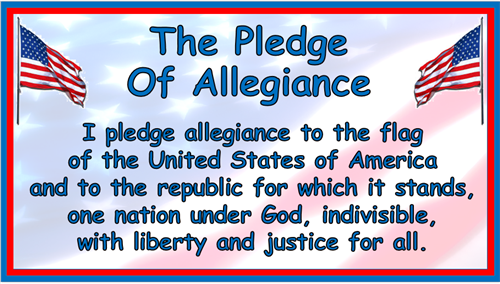
Dear Commons Community,
Sam Roberts, veteran New York Times reporter, has an article today that reviews and questions the authorship of our country’s Pledge of Allegiance. Entitled “We Know the Pledge. Its Author, Maybe Not”, Roberts reports on the possibility that Francis Bellamy, long considered the writer of our Pledge, was not truthful in claiming authorship. Here is an excerpt.
“For well over a century, the Pledge of Allegiance has been a pillar of America’s national identity. New evidence has emerged, though, to indicate that perhaps the man who pledged that he originated it did not.
Francis Bellamy, a Baptist minister and Christian socialist from upstate New York, went so far as to swear in at least two affidavits that he had formulated the oath one blistering August night in 1892 in the Boston headquarters of a magazine for young people that he was promoting.
Bellamy’s authorship was reaffirmed during the 20th century by, among others, the American Flag Foundation, the Smithsonian Institution, the Legislative Research Service (now the Congressional Research Service) and the Library of Congress. He was credited again as recently as last year in a resolution by the United States Senate and a citation by the “New Yale Book of Quotations.”
In February, however, simmering doubts about the oath’s origin resurfaced. A New York history buff discovered a newspaper account that appears to contradict Bellamy’s.
The discovery may also vindicate a longstanding but disputed claim that the oath actually originated in 1890 when a 13-year-old Kansas schoolboy — remarkably named Frank E. Bellamy — said he submitted it to a contest that was organized by Francis Bellamy’s own magazine to promote American values such as patriotism.
In February, Barry Popik, a historian and lexicographer who had been researching the pledge’s origin, was stunned to find a clipping on newspapers.com from the Ellis County News Republican of Hays, Kan., dated May 21, 1892.
The article described a school ceremony several weeks earlier, on April 30, 1892 — more than three months before Francis Bellamy swore he wrote the pledge -— in which high school students in Victoria, Kan., swore allegiance to the American flag using virtually the same words.
Mr. Popik collaborated with Fred R. Shapiro, the associate library director for collections and special projects at Yale Law School, who immediately noticed the inconsistency in the timeline: How could Francis Bellamy have created the pledge in August 1892, as he claimed, when a nearly identical pledge had already been recited and published the previous May?
Mr. Shapiro is also the editor of “The New Yale Book of Quotations,” which attributed the pledge to Francis Bellamy in its latest edition, published last August. He said that in subsequent editions, he would credit the oath to Frank Bellamy instead.
The May 1892 newspaper clipping does not prove that Frank Bellamy wrote the pledge, but it seems to suggest that perhaps Francis Bellamy did not.
“It’s very hard to explain what you see in that newspaper,” said Debbie Schaefer-Jacobs, curator of the division of cultural and community life of the Smithsonian’s National Museum of American History.
“I think you can’t rule out that Frank may have been the author and that Francis came across it and consciously or subconsciously used the words,” she added in an email this month.
Elizabeth L. Brown, a reference librarian at the Library of Congress, agreed that “if Francis Bellamy wrote the pledge in August of 1892, how did it come to be published in a Kansas newspaper in May 1892?”
In 1957, the Library of Congress certified Francis Bellamy as the author of the pledge on the basis of a 148-page investigative summary submitted by the Legislative Research Service. It was requested by Representative Kenneth B. Keating, a New York Republican, whose upstate district included Bellamy’s birthplace.
But that report focused almost entirely on determining whether the pledge had been written by Bellamy or by his boss, the magazine’s editor, James B. Upham, as the deadline loomed for the Sept. 8 edition of Youth’s Companion, which was to feature the oath in a printed program that schools could follow for the 400th anniversary of Columbus’s voyage of discovery the following month.”
The entire article is an interesting read.
Tony


